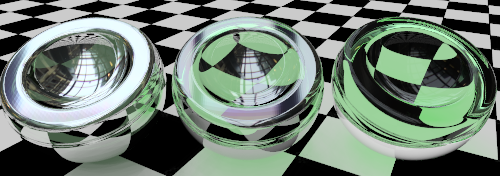

- #EXAMPLE TRANSLUCENT MATERIALS DRIVER#
- #EXAMPLE TRANSLUCENT MATERIALS FULL#
- #EXAMPLE TRANSLUCENT MATERIALS LICENSE#
Disabled FumeFX atmospheric effect, since Corona can now shade FumeFX objects by itself. CoronaFumeFxMod must be applied to the FumeFx object. Object visibility should now work for VolumeGrid, FumeFx and both Phoenix volume and foam. From now on visibility parameter in Object Properties also affects a material’s volumetric properties:. Improved AcesOtOperator unmapping in case alpha is 1.0 (this fixes the issue that the CoronaTonemapControl did not negate the effects of the AcesOT operator). #EXAMPLE TRANSLUCENT MATERIALS LICENSE#
CoronaGUI license is released when another renderer is selected.Decal Fit to Bitmap’s aspect ratio function now takes into account also cropping present in bitmap (both Corona’s and 3dsMax’s bitmap).
#EXAMPLE TRANSLUCENT MATERIALS FULL#
Full material editor is up to 22 times faster. Significantly speeding up material editor by caching rendered previews.Updated Chaos Cosmos to the latest version.Image copied from Corona VFB now has 72 pixels/inch resolution when opened in Photoshop.CIE – Added Tone Mapping error reporting when loading an image.Improved the speed of loading EXR/CXR files in Corona Image Editor by about 50%.Improved the Corona Decal “Visible in masks” tooltip.
#EXAMPLE TRANSLUCENT MATERIALS DRIVER#
Driver version R515 or later is required.Updated Optix denoiser implementation from version 6.5.0 to version 7.5.0.Added support for Pattern (EnMesh) assets from Chaos Cosmos.Also, semi-transparent volumetric effects now also contribute to the alpha channel for rays that don’t hit anything

The user can now set how volumes (volume material, sky volume effect and volume grid) interact with the alpha channel. Improved performance of CoronaAO in some rare cases. Enabled out of core textures by default, saves from 5 to 70% of memory required by textures (previously disabled by default). Added support for 3ds Max 2024 (also backported to Corona 9 HF3). Improved handling of anisotropy around UVW discontinuities / Improved handling of anisotropy near Z direction on some objects (e.g. In non extreme cases it leads to around a 10% speedup. In cases where the user includes just a small object and the rest of the scene is not rendered we get up to 600% speedup. Improved performance when rendering with masks:. RoundedEdges texmap now has the legacy button always visible. UvwRandomizer renamed to MappingRandomizer and now supports randomization of position, and extended to allow randomization of shaders in object/world space(Map/Tex). This was introduced in 3ds Max 2024, and Corona 10 fully supports its use. Added support for 3Ds Max Compound Node. Automatically create LightMix from layersĪn additional option is available when automatically generating a LightMix setup, which lets you have one LightSelect for each layer in the scene. Again, the usefulness of each will depend on your project. The translucent and transparent properties apply to all of the products we carry, including the cast, and extruded colored rod. You can see that the opaque material stops any light from passing through, while the transparent material allows light, and the shape of the object, to pass through. Here's an example of one of our opaque materials compared to translucent. For example, many people use translucent material for sign making, because it is excellent for backlighting.Īnother common option when choosing material is opacity, which lacks the characteristics of transparent and translucent material - opaque materials allow zero light to pass through. The following video shows a few of our colors in both transparent, and translucent.īoth types of material have endless practical uses, but depending on your application it’s important to know the difference. Of course, it’s easiest to see a few real-life examples using the material we have. In the example below, the furthest right sheet is transparent, while the next sheet over is translucent Think stain glass windows, which allow light to come through, but you won’t be able to clearly see anything behind the material. On the other hand, translucent material lets light pass through but objects on the other side can’t be seen clearly. The exact amount of light that can pass through depends on the material, but remember that you'll always be able to clearly see through the material. Transparent material has the physical properties of allowing light to pass through without a large scattering of light - this means that you can actually see through the material. Acrylic Balls & Half Round Balls (Cabochons)Ī question that comes up very frequently is the specific difference between transparent and translucent material, and it’s a great question since it can make a huge impact on what sort of acrylic you end up purchasing.






 0 kommentar(er)
0 kommentar(er)
